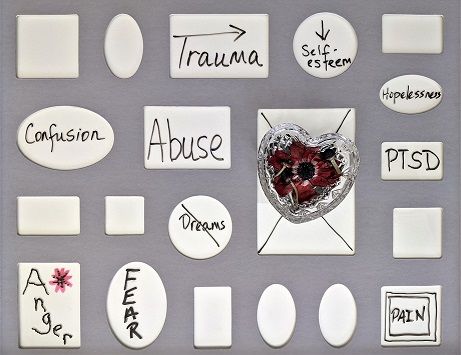The Silent Stakeholder: Why Trauma Needs to Be Considered When Planning Change
 The Silent Stakeholder: Why Trauma Needs to Be Considered When Planning Change
The Silent Stakeholder: Why Trauma Needs to Be Considered When Planning Change
As an organization change strategist who has been working with clients for the past 30 years to help roll out new technologies or install new post-merger cultures, I’ve seen millions of wasted dollars occur because true adoption did not take hold. While the root causes for this are various, one core reason can be attributed to the failure to consider and support the whole person–physical, emotional and spiritual–when working with stakeholders.
As change strategists, one of the first steps we take with clients when working to implement a significant change is to conduct a stakeholder analysis. We identify a list of the individuals, functions and departments that will be impacted by the change. We conduct conversations with these stakeholders to further learn about their key concerns about how they see the change impacting them. Typical concerns center on the ability to remain productive, how day-to-day work will be shifted by a new process, or, on a more personal note, what the impact will be to their paychecks. These conversations become the core information we use throughout the change implementation to plan for the appropriate communications, training and support that stakeholders need to embrace the change. However, no matter how many plans we set up to address the concerns discussed, issues inevitably appear that silently play out and can be deadly for our change initiative if we aren’t prepared for them.
We experience change through the distinctive lens of our personality, expectations, biases, and past experiences. Different past experiences mean that individuals will experience the same situation differently. If an individual has experienced a past traumatic event where high levels of fear and uncertainly were present, then that same individual is likely to be triggered when events occur in their current world that introduce fear and uncertainty. During a traumatic event, the body releases stress hormones that activate the amygdala towards the fight-or-flight response. For individuals that have experienced prolonged or “chronic” trauma, such as domestic violence or abuse, the stress hormones continue to be activated and physically change how the brain operates.
With 61% of adults experiencing at least one Adverse Childhood Experience (ACE) and one in six having experienced four or more ACEs during their lifetime, we can assume with some confidence that when the fear and uncertainty of change is introduced, leaders and employees will be influenced by past events and will experience that change through their trauma lens.
This is why trauma is a key stakeholder. It may be silent, but it is there. It has its own needs, its own personality. It lives in the hearts of leaders and employees. When it begins to reveal itself through behaviors that resemble lack of buy-in, emotional distancing, indifference to the change, lack of follow-through or cooperation, or argumentative disposition, it gets tagged as “resistance.” Oftentimes, it is met with negative perceptions or impatience from those leading the change. In reality, it’s just the human brain doing its job. As change leaders, it becomes our job to help alleviate that resistance.
So how do we do that? After all, we don’t typically ask stakeholders for their life story as part of our stakeholder analysis. There’s really no need to do that anyway because, statistically speaking, we know that some trauma likely exists. In many cases, your stakeholders may not even be consciously aware of their underlying traumatic impact. Our goal is not to re-traumatize but rather to create a safe environment that facilitates people adopting the changes we want.
Three Actions We Can Take to Address the Silent Stakeholder
The Leader 1:1 Relationship
When we are asking people to change their behavior, we need to be intentional about creating safe environments that allow them to do so. Nothing is more critical to the success of the change process than the 1:1 leader-to-employee relationship. Leaders are the key linchpins that help people pivot to adopt change. The change team, working at the enterprise level, cannot possibly know the personal stories and potential reactions of each individual in the organization. But the in-house leaders can, particularly when a trust-filled relationship exists with their direct reports. When this relationship is solid, employees will get on board no matter what the change is.
As change strategists, we spend a lot of time coaching leaders to help them not only understand the neuroscience of change, but to explore how their own life experiences might be hindering them from building these important relationships with their staff. I experienced the release of real change in both my personal and business life when I took intentional steps to examine the root causes of my own trauma triggers and, ultimately, get the healing I needed.
Getting People Involved
I’m sure all of you will remember where you were when you heard about the planes hitting the twin towers in New York in September 2001. Six months after that terrible disaster, we were asked to help facilitate a public conversation about what was going to be done with the real estate footprint at the former site of the buildings. Imagine asking a group of 5,000 hurting souls, many of whom were still in the heavy grieving process, to spend a day and come to agreement about a significant change after one of the most traumatic experiences in their lifetime?! But we did (and within an 8-hour time period), all to get them involved in creating their future. Nothing works better to help heal and move people towards change than acknowledging the realities of what’s happening and getting them involved in shaping their future. You can read more about the details of this powerful experience here.
Consistent Communications
Our brains like certainty, which can be challenging to provide during periods of high change. Change is messy, and messiness bring uncertainty. Committing to providing a regular cadence of communications throughout the change implementation provides a sense of security for the unsettled minds of employees. Our communication plans also create opportunities for dialogue and conversations. These occasions provide space that allows each individual to find meaning and gain insight for themselves about the change. It is critical that we equip leaders with the skills to have dialogue, ask questions and not feel uneasy when they don’t have all the answers.
Successful Change Means Acknowledging Trauma
During change, each key stakeholder needs to make their own personal decision whether to adopt that change. Yes, we may get “compliance,” and some will call that adoption. But, when there are big dollars at risk, we don’t want to settle for compliance. We want hearts and minds fully committed and engaged to make the change. Considering trauma as a key stakeholder will enhance the change leader’s ability to plan for and better realize success.
Tricia Steege, CEO of Transformation Strategies, helps leaders develop trust-filled relationships that create better results and change mastery. Her practice leverages evidence-based neuroscience research about change and her own personal trauma story to build change leadership capabilities with her clients. Learn more about her services at https://www.transformstrat.com/






